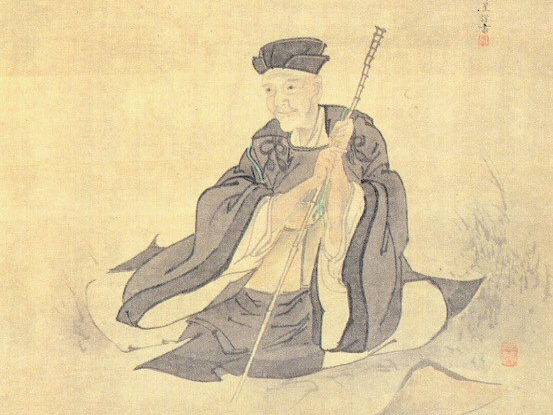It’s worth noting, before we get stuck into the so-called “rules” of haiku poetry, that the concept of there being rules isn’t necessarily true. What we might consider haiku “rules” aren’t actual rules, but rather guidelines. In the English language, most of the traditional haiku we’re familiar with are either translations – in which case, carrying over the meaning and feeling of the haiku poem is more important than the form, or they’re short form poetry written with a focus on feeling rather than obeying the supposedly traditional 5, 7, 5 three line poem.
Whether you consider yourself proficient in this form of Japanese poetry, or you’re about to sit down to write a haiku for the first time, below are a few rules and guidelines you might want to follow. While they aren’t necessary when it comes to writing modern haiku, they can still prove useful when you’re looking to improve your own poetry, including haiku and other forms.
Contents
Why Should I Write Haiku?
Even if you don’t see yourself as a haiku poet, exploring haiku can offer real benefits to poetic writing of all kinds. This form of poetry is extremely powerful in that it has to conjure a lot with very few words. While often used to explore concrete images of the natural world, this isn’t necessary. Instead, you can use haiku as a way to cut out wordy descriptions and follow a fairly strict form which can enhance your understanding and appreciation of poetry as a whole.
The “Rules” Of Writing A Haiku Poem In English
Again, let me clarify that the following rules should be seen as merely guidelines. They are the kind of rules you’re likely to have heard from a stressed-out English teach at high school, who probably cared even less about the haiku form than the rest of the class. Modern haiku by a Japanese poet, traditional haiku and haiku written in English is an art form, and like any poetic form, there are deviations and reactions of all kinds.
The important thing to truly keep in mind if that, the entire poem should be comprised of very few words, avoid elaborate language, and focus on the concrete image – like Matsuo Basho and his infamous old silent pond, which reads (depending on the Japanese poet’s translation) “The old pond | a frog jumps in | sound of water”. Japanese haiku and English speaking poets who write haiku all agree that simplicity is the key word when writing haiku.
10 Rules For Writing Haiku in English
- Three Lines – Typically, a haiku should be in only three lines. There are famous examples of haiku not being in just three lines, or of haiku being even shorter than three lines, such as the famous Ezra Pound haiku “The apparition of these faces in the crowd; | Petals on a wet, black bough.”. So, why could good ol’ Ezra get away with it? Put simply, he did it with deliberate purpose.
- Ensure Your Haiku Has Both A Fragment, And A Phrase – A fragment is essentially a sentence which is missing the main subject. It is often in passive voice, without a driving force behind it. A phrase, meanwhile, is a collection missing both a subject, a verb, or both. The inclusion of a fragment and a phrase is a common tool used to create a certain atmosphere in a poem, and is extremely common in haiku.
- Contain Some Element Of Nature (Kigo) – Kigo is a Japanese term referring to seasonal words. These words typically involve nature and have connotations relating to the larger natural world. For example “shunkan” (春寒), which translates to the “cold weather of early Spring”. While, in the English language, we don’t necessarily have the same specific terms, you can still elicit the same feeling by using terms with strong natural connotations. For example, you could use a phrase like “the thaw” to convey a similar feeling. A kigo, in English, should be thought of as a seasonal word which conveys powerful sensory detail or a specific seasonal event. This can be incredibly difficult to achieve in just a few words, but it’s a core component of haiku, both modern and traditional.
- Avoid Capital Letters – Capitalistion can have a massive impact on the way a haiku is read. It draws attention to specific words and, in our minds, often still signifies the start of a new sentence, which interrupt the flow and pacing. When you only have three lines, and a limited number of syllables, anything that interrupts or alters the flow is extremely important.
- Avoid Punctuation – Just like the above, punctuation changes how we read, even subconsciously. We’re conditioned to take a brief pause when we hit a comma, inflect on a question mark, and consider an exclamation mark a sign of enthusiasm. While a semi-colon might be okay, you should still be extremely sparing when it comes to punctuation in haiku.
- Write In The Present Tense – One of the main purposes of haiku is to capture a specific moment or sudden realisation. If you write in the past tense, you’re already removing the immediacy from the work, making the haiku something that happened in the past. Thanks to the present tense, your imagery should allow you to capture a brief moment in time, and from that brief moment, explore a much larger concept.
- Use Only Concrete Images – Haiku is a little similar to imagist poems, in that the concrete image itself should be enough. Concrete images when paired together, can elicit a complete range of emotions and connotations. As such, you should only use the immediate concrete image when it comes to writing haiku.
- Avoid Personal Pronouns – Traditional Japanese haiku should, at least in theory, be written in the complete absence of ego. How do we do that? We remove ourselves from the work. There shouldn’t be anything in the haiku about you, or how you’re feeling. If you want to, you can use the concrete image to reflect your thought process and guide the reader to the same conclusions as you.
- Consider A Narrowing Of Focus – It is often a good idea to use haiku as a method of drilling down into the specifics of a concrete image. Start with a fairly broad image in the first line, then focus on a smaller piece of the image in the second line. Narrow the third line even further, until you’re focused in on “the quiver of dew” on a piece of grass in a field.
- Write In A Structure of “God, Earth, Man” – Essentially an extension of the above, “God, Earth, Man” is a haiku practice that I use regularly. Essentially, the premise acts as a guide to the above point about the narrowing of focus. Simply put, start with a large image in the first line – a universe, the place wherein the next two lines occur. Then narrow it down to a contextual line, giving further detail on the above. Finally, in the third line, narrow it down even further, and focus in on something small and insignificant compared to the other lines. There’s more to the theory, but that’s the basic reading.
Syllable Counting While Writing Haiku in English
Haiku poems typically contains three lines – that we know. The next most commonly known component of traditional haiku structure is the syllable count. Haiku written as three lines are typically structured around a syllable count of 5, 7, 5. That means the first line has five syllables, the second line has seven syllables and the final line has five syllables.
As I’ve said before, I don’t necessarily believe that this syllable count results in the best poetry. However, aiming towards a strict syllable count can help you to slim down your poetry, removing unnecessary words and helping you to improve your overall word choice.
If you’re adamant that you’re ready to start syllable counting, here are some other potential rules you might want to follow when you sit down to write a haiku.
More Complex Rules Of Haiku Poems
Some of the most complex “rules” you might want to follow when practicing creative writing haiku in English include:
- Count Your Syllables – The most obvious test of your haiku writing ability is to count syllables while writing. Write your haiku to the 5, 7, 5 accepted form. If you’re struggling to find the right words, don’t be afraid to write out seventeen syllables as a one line. However, be aware that just because you break a poem or a piece of writing into a form, doesn’t necessarily make it a haiku. There is a lot more to consider than simply 5, 7, 5 when it comes to writing a haiku in English.
- Never Use Enjambment – While enjambment (lines running over into the next line) is a powerful poetic technique, it should not be used in haiku. Enjambment can be used to great effect in other poems, as it can help you to control pace, rhythm and countless other factors of your poetic work. However, in haiku, you want your poem to be a series of distinct images or points – enjambment will only confuse matters, and ruin the emotional impact that your haiku might have.
- Use A Kireji – Kireji (cutting word) is a common part of most traditional haiku. Using kireji can help you to break your haiku apart, from one breath to another, but make sure you don’t overuse the technique. More than one kireji in a haiku will ruin its flow and make it difficult to read. You also, by overusing the power of a cutting word, run the risk of packing too many ideas into the few lines, overwhelming them and confusing the reader. Remember that, with a haiku, complexity lies in its simplicity.
- Focus In On Your Final Line – The final line is often the line which will stay with people. It is the culmination of the scene setting you’ve done earlier in the poem, and is often the location of the turn in the poem, where the idea shifts from one to another. If your haiku fails to grab your attention, it is more often than not due to a weak last line.
- Remove All Prepositions – While this isn’t necessarily a technique which will result in better haiku, it does offer an interesting limitation on your work. By removing prepositions, you are forced to focus in on what truly matters within the haiku, rather than explaining where the concrete images are in relation to each other. The prepositions you might want to eliminate from your haiku writing include on, at, among, between or in. Again, it won’t necessarily improve the poem that you’re writing, but it can be a useful way of improving your poetry writing by forcing you to focus in on words you might typically rely on.
- Remove Any Gerunds – Gerunds, the “ing” endings of certain words, are a powerful lexical tool. Because they are so powerful, and so commonly used, removing them from your haiku writing can give you additional syllables to work with, in addition to forcing you to think differently about the phrase in front of you. Remove gerunds from your haiku, even if only as practice in structuring and phrasing certain terms for poems you’ll go on to write in the future.
Should Haiku Only Use Images Drawn Directly From Nature?
Simply put, no. There’s nothing that says you can only use natural imagery in your haiku. That being said, nature is often the focus of haiku for a reason – it allows you to incorporate beautiful words, unforgettable concrete images and include all the factors we’ve talked about above, including kireji and the narrowing of a poem into God, Earth, Man.
While you don’t need to rely entirely on natural images in your creative writing, you should still try to write without ego and almost without the self involved at all. Focus on building the scene without putting yourself into it. That is one of the key components that make many haiku memorable.
Haiku As Concrete Image Poems
Haiku are poems about the world around us, not what goes on in our own heads. They present beauty as concrete imagery, and leave the rest for the reader to explore in their own mind. That’s one of the main reasons that good haiku, either from American poets, English poets or traditional Japanese poets, sticks in our minds and has become extremely popular across the world.
For more information on English or Japanese haiku, any other form of poetry, or even some of the creative writing terms I’ve talked about, don’t hesitate to check out some more of our articles today!
- Glossary of Japanese Poetry Terms - 26 February 2025
- What is Waka Poetry? - 23 May 2024
- How to Identify the Kigo in a Haiku: - 22 March 2024





